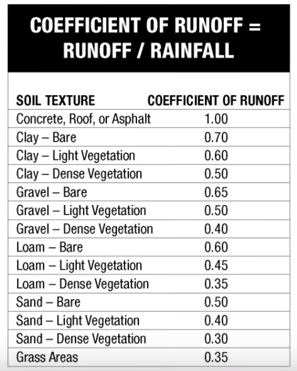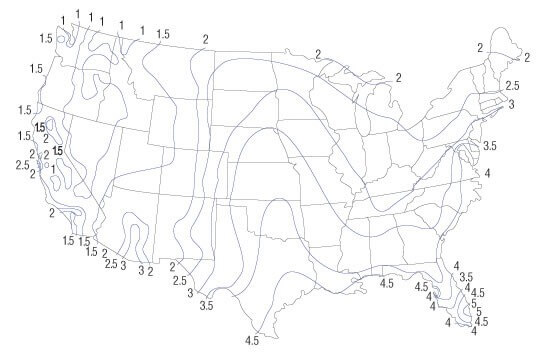Let’s teach you how to calculate and store your property’s rainwater runoff. One of the most important elements of designing a proper drainage system is determining how much Rainwater is falling on your property and what to do with this volume of water. Here we will also provide you with the tools needed to design a custom drainage system for your property.
Here is a list of a few things that you will need:
- Paper
- A pen or pencil
- A tape measure
- A calculator.
There are three steps to follow when calculating drainage:
- We need to calculate the Rainwater/storm runoff or flow. Run-off is given the symbol Q.
- We convert the Rainwater run-off into a volume of water
- We determine how we are going to store the runoff volume.
Calculate storm runoff using the rational method. There are several method that can be used to calculate drainage, but the rational method is probably the easiest and most widely used method. The rational method equation is:
Q = C x I x A/96.23, where,
- Q is the storm-water run-off in gallons per minute (GPM)
- C is the runoff coefficient,
- I is the rainfall intensity in inches per hour
- A is the drainage area in sq. ft.
- 23 is a conversion factor when you want the flow rate in GPM and your drainage area is in sq. ft.
C is the runoff coefficient this is essentially the percentage of water that runs off of a given surface. For example; if rain is falling at 2 inches per hour and only 1 inch per hour is running off the surface the C value for that surface is 1 divided by 2 or 0.5.

Here is a table that shows the C value for various surfaces.
I, is the rainfall intensity in inches per hour and can be calculated in several ways but here we use the approximate rainfall values from this 100 year rainfall map.
The 100 year rainfall map shows the approximate amount of rain that will fall in the 100 year storm event. 
A, is the surface area where the runoff waters come in from in square feet. The square footage for one half of the roof of a house of 40 feet by 20 feet which equals 800 sq. ft.
The rational method equation says that our rain runoff is equal to the runoff coefficient C times the rainfall intensity I times the run-off area A, all divided by 96.23.
- The run-off is coming from the roof so the C value in our equation is 1.0.
- Let’s pretend this house is in Atlanta, Georgia: Where the I value is 3.5 inches per hour
- The A value is 800 sq. ft.
By multiplying this out we can expect to get 29.1 gallons per minute of water from this portion of the roof in the 100 years storm event.
Another example:
- This time the surface is sand, so the C value is point 5,
- House in Las Vegas, NV where the I value is 1.5 inches per hour
- The run-off area is 1000 sq. ft.
The expected run-off here is 7.79 GPM.
If the water is coming from two different surfaces but draining to the same area, you treat them individually then combine the results.
Example, water is coming from both the roof and the grass with areas of 800 and 1000 sq. ft. respectively, we will assume two inches of rainfall per hour. The run-off from the roof will be 16.63 gallons per minute and the run-off from the grass will be 7.7 gallons per minute.
The run-off from the roof was 16.6 gallons per minute and the runoff from the grass was 7.27 gallons per minute adding these together we get SOME 24 gallons per minute draining from these areas.
